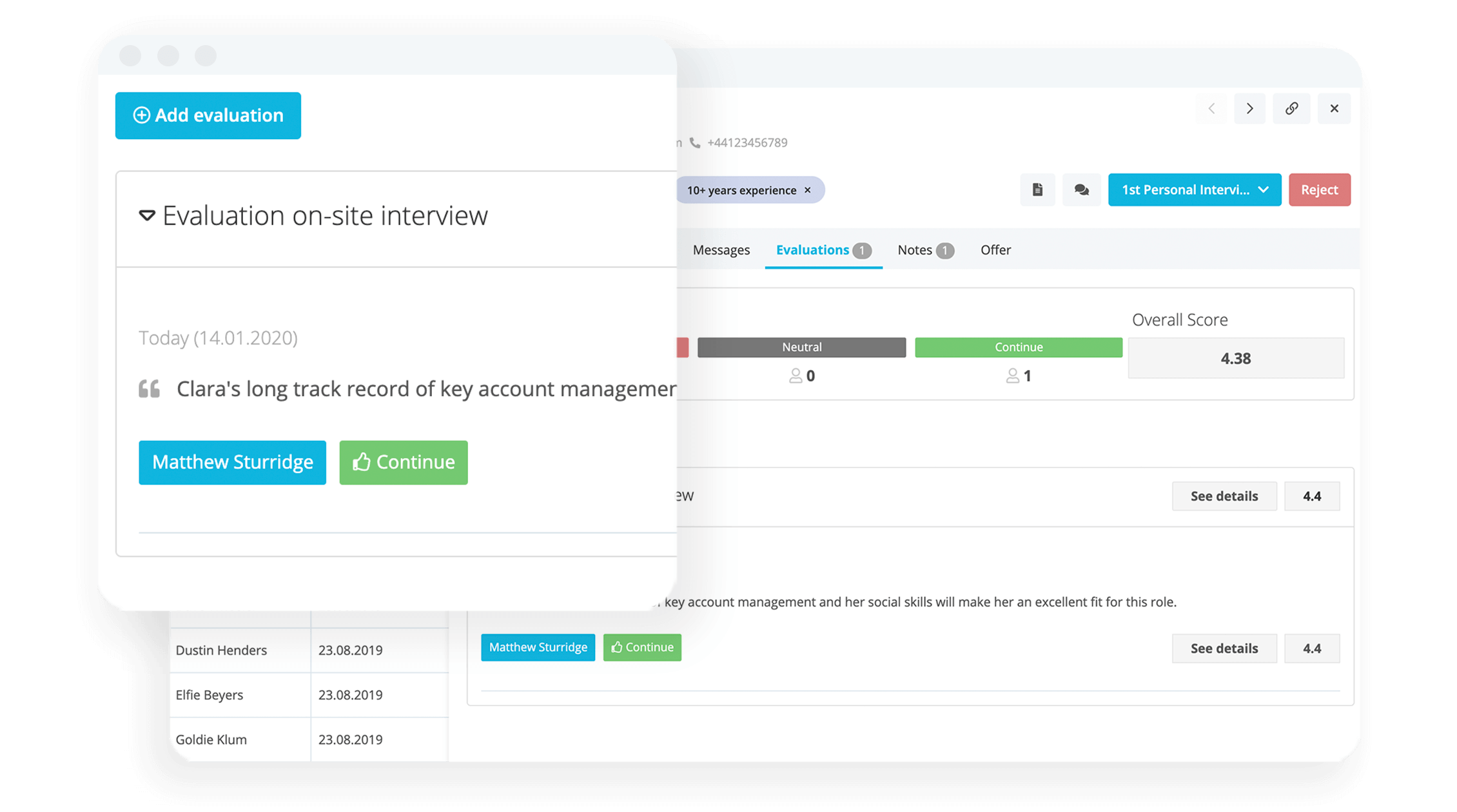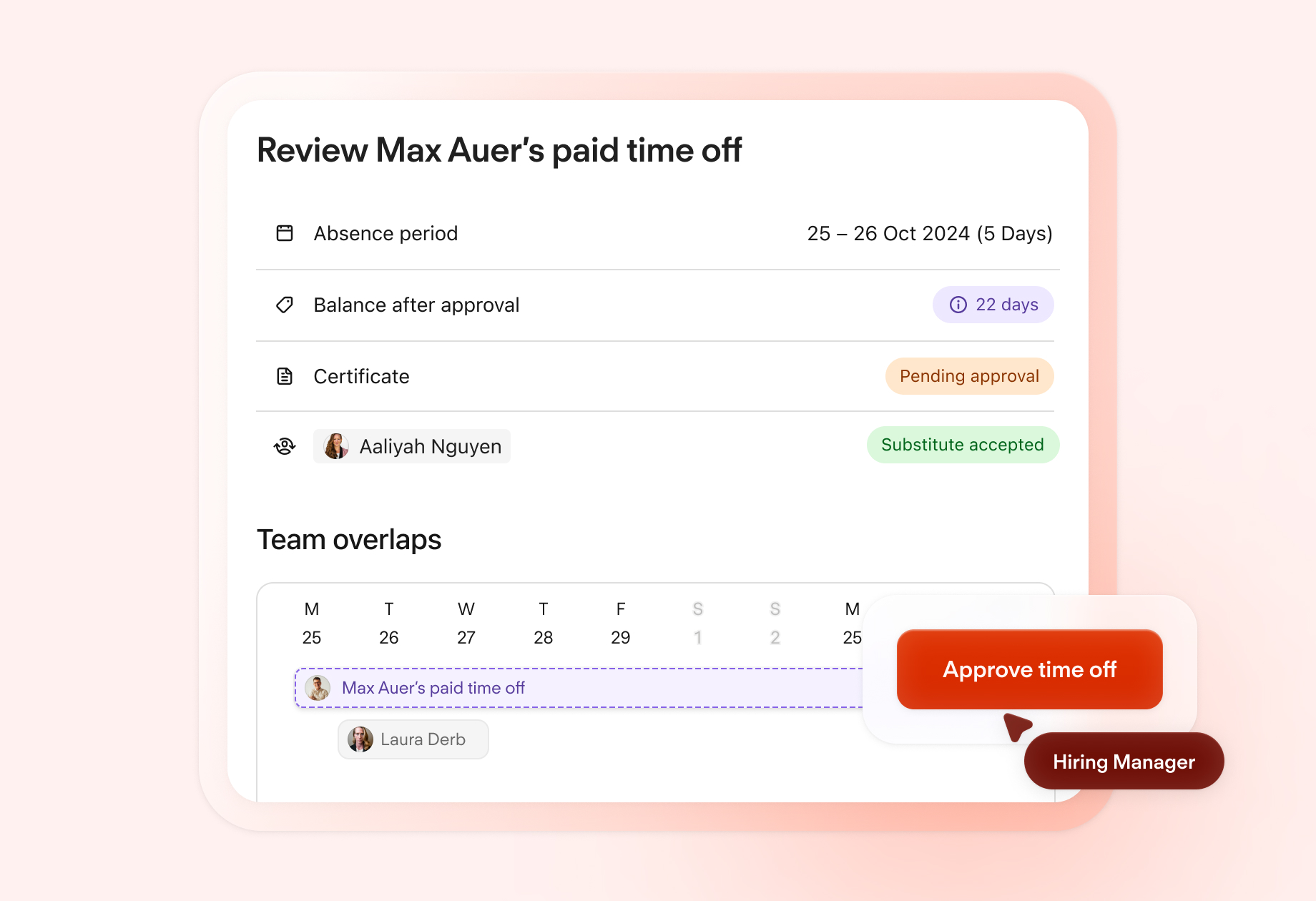What Is A Semi-Structured Interview? (Templates to Help You Get It Right)

A semi-structured interview can help you delve deeper into a candidate’s answers to discover if they truly are the right match or the right fit for your company culture.
In this article, you’ll find some useful templates to use when conducting a semi-structured interview, so you can seamlessly adapt it and make it part of your overall ecruitment process.
Is your candidate the perfect fit? Find out with these interview questions.
Contents
- 1What Is A Semi-Structured Interview?
- 2Why Do Semi-Structured Interviews Matter?
- 3How Do Interviews Factor Into Workforce Planning?
- 4Structured Versus Semi-structured Interviews
- 5How to Create an Awesome Semi-structured Interview Process: A Template
- 6Helpful Template for Semi-structured Interview Questions
- 7Using the 5 W and Y Questions in Semi-Structured Interviews
- 8Nail Your Next Semi-Structured Interview
What Is A Semi-Structured Interview?
A semi-structured interview, as part of a company’s overall recruiting process, is an interview format that allows for more flexibility and is based on three key factors: asking open-ended questions, exploring ideas with follow-up questions, all with the license to go off track and explore different avenues or topics.
Why Do Semi-Structured Interviews Matter?
Consistency is key in the interview process. A standardized recruiting process helps compare candidates accurately and fairly. When standardized procedures are used, it ensures that evaluations are based on objective criteria, rather than intuition.
One way of ensuring consistency is to ask everyone the same questions, and document and compare candidates’ responses accurately (the structured interview, in essence).
As we covered in a previous blog post about how to optimize your recruiting process, "A German study by Bitkom Research and Personio showed that large companies withdigital HR processesand recruiting software, as well as structured interviews, are more successful than those who work in an analog, unstructured way."
Does this mean that structured interviews are better, though? As it happens, it does not.
Structured interviews do allow for more formality and consistency in the process. But, they don’t always let interviewees get a true feeling for the candidate. They also prevent interviewers from diving deeper below surface-level answers.
Three Templates For Thorough Evaluations

These three templates can help ensure that you assess, evaluate, and hire the best candidates. Click the button below to download our evaluation form templates today.
Download TemplatesHow Do Interviews Factor Into Workforce Planning?
When interviews are used in an optimal fashion, it helps companies recruit the right person. That can serve as a crucial element of successful workforce planning.
As we say in our HR lexicon article on 6 steps to successful strategic workforce planning, “Great workforce planning can help align what a business does, why they do it, and how their employees can add value to their day-to-day work.”
Asking the right, open-ended questions during interviews can help potential candidates feel excited about being part of your company from the moment they leave the interview. If your interviewers know how important this is, they’re more likely to share why they’re proud of your organization which, in turn, will inspire potential candidates.
On the other hand, having to rigidly adhere to a set of questions isn’t always the best way to generate and convey passion.
Let’s face it, a lot of interview questions are the same. Interviewers might typically say, “Talk me through your CV. What are your strengths and weaknesses? Why do you want to work for our company?” or variations on a theme.
Candidates know the typical questions that are asked. Unimaginative interview questions may produce standard responses that don’t give you the full picture of who they are.
With enough practice, it’s possible for candidates to appear that they are smooth, seamless, and unflappable. This appears true even when they are not.
Structured Versus Semi-structured Interviews
There are typically three types of interviews:
Structured interviews
Unstructured interviews
Semi-structured interviews.
In structured interviews, interviewers ask a standard list of questions in a standard order.
Unstructured interviews, however, are all different: With no consistency, frameworks or rigor. Although similar questions might be asked, they can be asked in totally different ways, by different people, in different contexts.
The semi-structured interview combines the freedom and flexibility of an unstructured interview with the rigor and comparability of a structured interview.
Structured Interviews: Pros & Cons
Pros | Cons |
|---|---|
Consistency (across candidates and interviewers: allows for ease of comparison) | Candidates can be ‘too’ prepared if typical interview questions are used |
Reliability (removes bias) | Interviewers can get bored with the same questions and lose focus |
Documentability (it’s easier to find, document, and retrieve information) | Everyone starts sounding the same after a while |
Semi-structured Interviews: Pros & Cons
Pros | Cons |
|---|---|
Allows for a true discussion | Not as easy to document and record |
Let’s a candidate share more about themselves | Inconsistent – different interviewers will ask different questions |
Can expose candidates who can’t adapt to change, and those who are less able to think on their feet | Can make interviewees more nervous (although empathetic interviewers will do their best to minimize this) |
Allows two-way communication between candidates and interviewers | Less-experienced interviewers might struggle to get candidates to answer the real questions, or keep to the point |
How Much Preparation is Required for a Semi-structured Interview?
Unfortunately for interviewers, just making an interview less structured doesn’t mean less preparation is required. In fact, a really good semi-structured interview might actually require more preparation…
As our blog post on lists of questions and preparation for a structured interview explains, interviews help HR and hiring managers identify whether a person is a good fit for the company, and delve into deeper issues like:
Teamwork
Creativity
Resilience
Diligence
The candidate’s ability to handle criticism
A great way of preparing a semi-structured interview is to look at a candidate’s CV and any social media profiles or online activity they share and use the questions described in the above blog post as a starting point. Also, jot down any questions that come to mind during your research to potentially ask them during the interview.
For example, you might see that they do a lot of charity work in their spare time. Asking them about it could break the ice and make them feel more comfortable at the beginning of the interview.
Talking about it will also help them showcase their values, share their passions, and give you a hint about what drives them, without having to put them on the spot to come up with a work-based example that addresses these points.
Hire The Right Employees, Faster.

Using Personio’s Applicant Tracking System, you can assing tags to pre-filter candidates, automatically obtain internal feedback, and make sound hiring decisions all from one place: Personio.
Discover Personio's ATSHow to Create an Awesome Semi-structured Interview Process: A Template
Stage | What Should Happen |
|---|---|
Stage 1: Job Description | Always have an up-to-date job description on hand to lead the interview. |
Stage 2: Company Values | Use your company's values to guide your questions and follow-up questions. |
Stage 3: Candidate Research | Look up a candidate online, get to know their experience, and be prepared to meet them. |
Stage 4: Question Preparation | Start with structured questions, but expand on them as answers come in. Maintain an open-ended flow. |
Sage 5: Interview Documentation | Ensure that feedback is documented securely (ideally using an ATS). |
Stage 1: Job Description
Always have the right, up-to-date version of the job description to hand when interviewing a candidate. Ensure interviewees know the most important characteristics, traits, or experience they’re looking for in a candidate – so they can give good feedback.
Stage 2: Company Values
Use your company values to guide your employees as they ask the questions, and give candidates the opportunity to reflect on what these values mean to them, how they live by these values, or, if they disagree with them, why.
Stage 3: Candidate Research
Meeting a candidate can tell you a lot about them. Their online profiles can sometimes tell you even more. Do your own homework about them before the interview.
Stage 4: Question Preparation
Feel free to start with the typical structured interview questions you have asked candidates in the past, but expand on them. Feel free to explore other areas, add new questions, or remove questions that aren’t relevant or you feel have already been answered.
Stage 5: Interview Documentation
Once the interview is done, it’s critical that a record is kept of what was said. Automated systems like Personio can help you digitize your HR, store documents in a single location, and allow all relevant parties to have access to key HR information.
Helpful Template for Semi-structured Interview Questions
At the beginning of this blog post we explained how a semi-structured interview is like a buffet. So if you want the freedom and flexibility of a structured interview without having to wing it, try using your typical or standard interview questions as a menu, for example:
Use a typical interview question but give context about your organization and allow the candidate to add their own flavor. A three-stage open-ended example is:
This is a characteristic that we really value at company X (e.g. honesty).
Give me an example of when you did this…
How did this help you, or your business?
Follow up on a candidate’s answer by giving them the opportunity to elaborate on the key skills or experience you require for the job role. A three-stage open-ended example is:
The job spec says we need someone with X many years of experience.
Talk me through your relevant experience…
What did you learn during this process that would be relevant to our company?
Allow them to use examples from their personal or professional lives that showcase their passion, determination, and dedication.
We like employees to take ownership of their work and go home with a sense of satisfaction.
Tell me about a project you’ve been involved in that made you feel proud…
What would you do differently next time, and why?
Looking for more useful templates? Simply click this link to find our full library.
Using the 5 W and Y Questions in Semi-Structured Interviews
Closed-ended questions (anything that has a yes or no answer) aren’t generally that useful in interviews (except for when it comes to obvious questions like, “Do you have a criminal record”, for example). But interview questions don’t just have to follow the format of “gives us an example of when…”.
Instead, try to use the 5 Ws and Y questions:
Who?
What?
When?
Where?
Why?
How?
Or combine several of them. For example, “Tell me a bit more about the project you did at Company Z. Who did you work with? Why did you take that approach? How did you decide what to do, and when to use each tactic?”
You might want to split these into separate questions so the candidate doesn’t get confused. Each of these questions can be used to gather more detail about what a candidate did, what motivated them to do it, and how they approached a task.
Nail Your Next Semi-Structured Interview
While it is really important to be consistent when interviewing candidates, semi-structured interviews give your interviewers and the candidates the flexibility to really explore who they are, and what they can bring to the role.
That said, be sure to document the interview process in detail and record the answers to the semi-structured interviews so you can keep accurate records and compare interviews. That’s where software like Personio can help.

